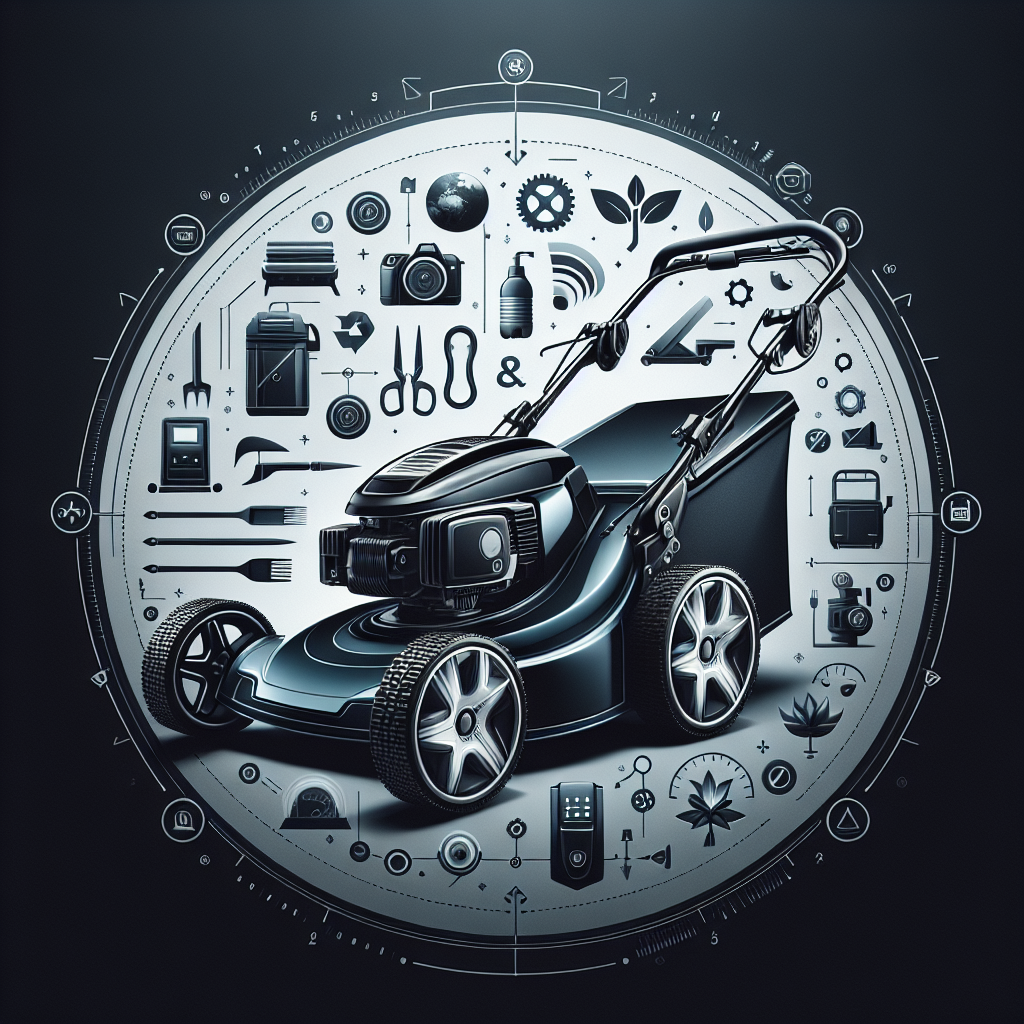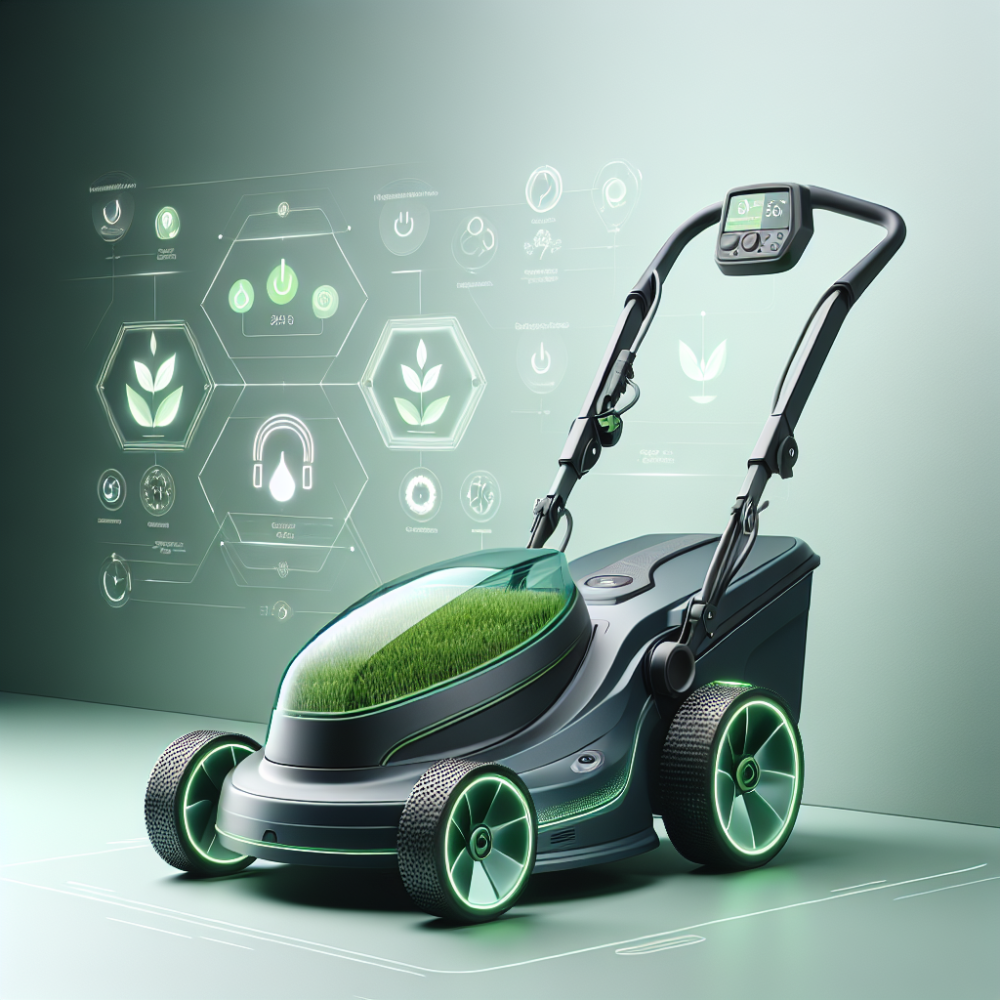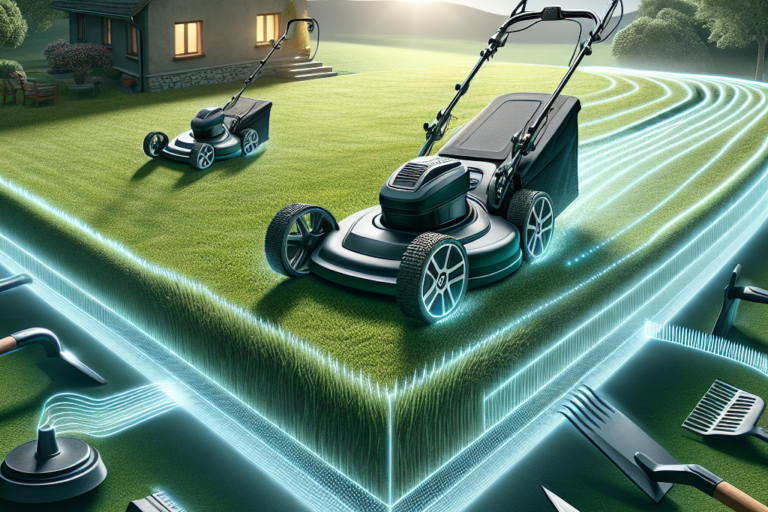If you own an electric mower or are considering purchasing one, you may be wondering about the typical lifespan of its motor. The motor is the heart of the mower and plays a crucial role in its performance and longevity. In this article, we will explore the factors that can affect the lifespan of an electric mower’s motor and provide insights on how to ensure your mower stays in peak condition for years to come. So sit back, relax, and let’s explore the world of electric mower motors together.
Factors Affecting Lifespan of an Electric Mower’s Motor
Electric mowers are an excellent option for maintaining a beautiful lawn without the hassle of gas-powered engines. However, like any mechanical device, electric mower motors have a limited lifespan. Several factors can influence the longevity of an electric mower’s motor, including motor quality, maintenance practices, frequency of use, and environmental conditions. By understanding these factors and taking appropriate actions, you can maximize the lifespan of your electric mower’s motor and get the most out of your investment.
Motor Quality
The quality of the motor plays a significant role in determining its lifespan. When choosing an electric mower, consider the brand, type, and power of the motor.
Motor Brand
Opting for a reputable motor brand is crucial. Established brands often have a history of producing reliable and durable motors. They invest in research and development to create innovative designs that provide superior performance and last longer.
Motor Type
Different types of electric mower motors are available in the market, including brushed and brushless motors. Brushless motors, known for their higher efficiency and longer lifespan, are a better choice if you want to extend the lifespan of your mower’s motor.
Motor Power
The power of an electric mower’s motor is another factor to consider. While higher power motors can handle thicker grass and tough terrains more effectively, they tend to consume more energy, which might lead to earlier wear and tear. Choosing a motor with an appropriate power level for your lawn size and terrain can contribute to a longer motor lifespan.

Maintenance Practices
Proper maintenance is essential for keeping your electric mower’s motor in good condition and extending its lifespan. Regular cleaning, blade sharpening, lubrication, and belt inspection and replacement are some maintenance practices to consider.
Regular Cleaning
Cleaning your mower after each use is vital to prevent the accumulation of grass clippings, dirt, and debris. These particles can hinder the motor’s ventilation, leading to overheating and premature motor failure. Use a brush or compressed air to remove any build-up from the motor and its surrounding components.
Blade Sharpening
A sharp cutting blade reduces the strain on the motor by efficiently cutting through the grass. Dull blades, on the other hand, require more power from the motor, increasing the risk of motor wear and tear. Sharpening the blade regularly keeps the motor running smoothly and extends its lifespan.
Lubrication
Maintaining proper lubrication of the motor’s moving parts is crucial for reducing friction and avoiding unnecessary strain. Refer to your mower’s user manual for guidance on the type and frequency of lubrication required. Over-lubrication can attract dust and debris, so be mindful of the recommended amounts.
Belt Inspection and Replacement
If your electric mower has a belt-driven motor, it’s essential to inspect the belt regularly. Over time, belts can become worn or loose, affecting the motor’s efficiency and power transmission. Replace any damaged or worn-out belts promptly to avoid further motor complications.
Frequency of Use
The frequency of use is another critical factor in determining the lifespan of an electric mower’s motor. Two main considerations for the frequency of use are the number of usage hours per week and the number of years the mower has been in service.
Usage Hours per Week
The more frequently you use your electric mower, the more strain is placed on its motor. If you have a large lawn or use the mower for commercial purposes, the motor will likely experience more wear and tear. Keeping track of the usage hours per week can help you anticipate when the motor might need maintenance or even replacement.
Number of Years Used
Even if your electric mower is not used intensively, the number of years it has been in service can directly impact its motor’s lifespan. Motors, like any other mechanical component, have a finite lifespan. With time, internal parts can wear out, and the motor’s performance may gradually decline. Regular maintenance and inspection become even more critical for older electric mowers.

Environmental Conditions
The environment in which your electric mower operates can significantly affect its motor’s lifespan. Three crucial environmental factors to consider are temperature, humidity, and the presence of dust and debris.
Temperature
Extreme temperatures can adversely affect the performance and longevity of an electric mower’s motor. Excessive heat can cause overheating, while freezing temperatures can stiffen lubricants and compromise the motor’s efficiency. Preferred operating temperatures vary depending on the motor’s design, so it’s important to familiarize yourself with the manufacturer’s specifications and avoid prolonged operation in extreme conditions.
Humidity
Moisture can damage electrical components and compromise the motor’s insulation, leading to short circuits or corrosion. Operating the electric mower in excessively humid conditions without proper protection can diminish the motor’s lifespan. If you mow during wet weather, make sure to dry the mower thoroughly before storing it.
Dust and Debris
Operating your electric mower in dusty or debris-filled environments can lead to clogged air vents and increased strain on the motor. Dust and debris can hinder proper cooling and contribute to premature motor failure. Whenever possible, avoid mowing in excessively dusty areas or ensure that the mower’s ventilation system is adequately protected.
Signs of Motor Wear and Tear
Recognizing the signs of motor wear and tear is essential for timely maintenance or replacement. If you notice any of the following signs, it may indicate that your electric mower’s motor requires attention:
Decreased Power
If your electric mower struggles to maintain its usual cutting power or frequently bogs down, it could signify motor wear and tear. As the motor’s internal components deteriorate, they become less efficient, resulting in reduced cutting performance.
Unusual Noises
Unfamiliar noises, such as grinding, rattling, or squeaking, might indicate that the motor is experiencing mechanical issues. Pay attention to any abnormal sounds and address them promptly to prevent further damage and potential motor failure.
Overheating
Overheating can occur due to excessive use, obstructed air vents, or internal motor problems. If your electric mower becomes extremely hot to the touch or automatically shuts off due to overheating, it is crucial to identify and resolve the underlying cause to prevent permanent motor damage.
Intermittent Operation
If your electric mower’s motor operates intermittently, randomly cutting in and out, it could point towards electrical or wiring issues. Loose connections, damaged cables, or faulty switches can interfere with the motor’s proper functioning and should be addressed by a qualified technician.
Factors to Consider for Motor Replacement
At some point, your electric mower’s motor may reach the end of its lifespan and require replacement. When deciding whether to replace the motor or invest in a new mower, consider the following factors:
Cost of Replacement
Compare the cost of a new motor with the overall value of your electric mower. If the motor replacement cost is prohibitive, it may be more cost-effective to purchase a new mower with an updated motor.
Availability of Parts
Before opting for motor replacement, ensure that the required parts are readily available. If the motor is obsolete or hard to find, getting a replacement might be challenging and time-consuming.
Age of the Mower
Consider the age of your electric mower when determining whether to replace the motor. If the existing motor has served for a relatively long time or if the mower is significantly outdated, it might be more practical to invest in a new mower altogether.
Overall Condition of the Mower
Evaluate the overall condition of your electric mower, not just the motor. If the rest of the mower is in excellent shape, with minimal wear and tear, replacing the motor might be a worthwhile option to extend the mower’s lifespan.
Tips to Extend Motor Lifespan
While the lifespan of an electric mower’s motor is finite, there are several steps you can take to prolong its lifespan and maximize its performance:
Choose a High-Quality Motor
Investing in a high-quality motor from a reputable brand increases the chances of a longer lifespan. Read product reviews, seek recommendations, and choose a motor known for its reliability and durability.
Follow Recommended Maintenance Schedule
Refer to your electric mower’s user manual for its recommended maintenance schedule. Adhering to the manufacturer’s guidelines ensures that crucial maintenance tasks, such as cleaning, lubrication, and blade sharpening, are performed at the appropriate intervals.
Avoid Overworking the Motor
While electric mowers are designed to handle various grass lengths and terrains, pushing the motor beyond its capabilities puts unnecessary strain on its components. Avoid cutting excessively tall or wet grass, as it can overload the motor and reduce its lifespan.
Store the Mower in a Suitable Environment
When not in use, store your electric mower in a dry and sheltered area, protected from extreme temperature fluctuations. Exposure to moisture, sun, or severe weather conditions can accelerate the motor’s deterioration.
Protect the Motor from Moisture and Dust
Use appropriate covers or tarps to shield the motor from moisture, dust, and debris when stored or during unfavorable weather conditions. Regularly inspect and clean the motor’s ventilation system to prevent clogs and maintain proper airflow.
Conclusion
The lifespan of an electric mower’s motor can vary depending on several factors. Motor quality, maintenance practices, frequency of use, and environmental conditions all play a role in determining how long your motor will last. By choosing a high-quality motor, following recommended maintenance practices, considering the frequency of use, and taking environmental factors into account, you can extend the lifespan of your electric mower’s motor. Understanding the signs of motor wear and tear, considering the factors for motor replacement, and implementing tips to prolong motor lifespan will help you make informed decisions and get the most out of your electric mower investment. With proper care, your electric mower’s motor can provide years of reliable and efficient operation, ensuring a well-maintained lawn for seasons to come.






